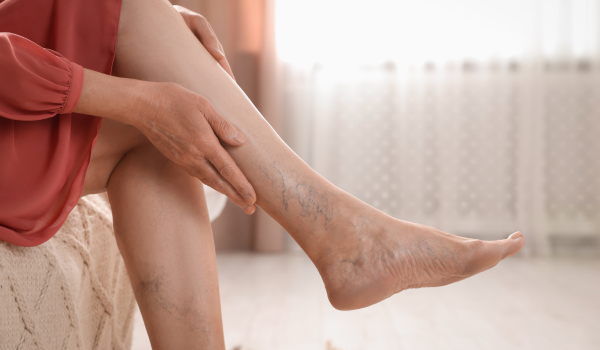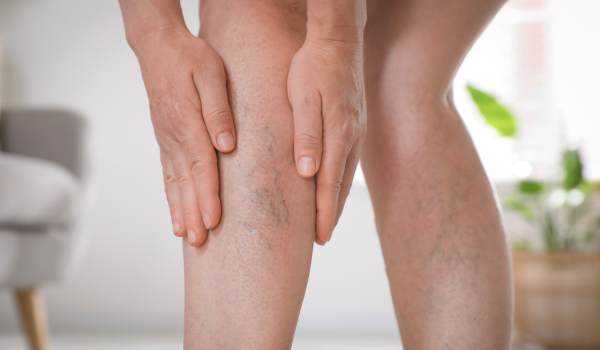.png)
What Is Venous Stasis?
Venous stasis refers to the slowing or stagnation of blood flow in the veins, primarily in the legs. It occurs when blood doesn't flow efficiently back to the heart and begins to pool in the lower extremities. This condition is a key component of chronic venous insufficiency (CVI) and increases the risk of serious complications like blood clots, varicose veins, and venous ulcers.
Detecting venous stasis early is essential for effective treatment and prevention of long-term damage. Understanding the subtle signs that appear before major symptoms develop can help protect your vascular health.
Why Early Detection Matters
Venous stasis often begins silently. By the time symptoms become severe, the damage may be difficult to reverse. Early detection allows for:
-
Better management with lifestyle changes
-
Reduced need for invasive treatments
-
Prevention of deep vein thrombosis (DVT) and ulcers
-
Improved long-term quality of life
Recognizing early warning signs is the key to stopping the progression before it becomes a chronic problem.
Heaviness in the Legs
A common early sign of venous stasis is a sensation of heaviness or tiredness in the legs, especially at the end of the day. This happens because blood is pooling in the lower limbs, increasing pressure inside the veins.
This heaviness:
-
Is often worse after standing or sitting for long periods
-
Improves with leg elevation or walking
-
Can be mistaken for general fatigue or overexertion
If you consistently feel leg heaviness—even without visible swelling—it may indicate early venous circulation issues.
Mild Leg Swelling
Swelling in the lower legs, ankles, or feet is one of the earliest visible signs of venous stasis. Fluid leaks from veins under pressure into surrounding tissues, leading to puffiness or a tight feeling in the skin.
Early-stage swelling:
-
May appear in the evening and resolve by morning
-
Often occurs on both sides but can be more noticeable in one leg
-
Leaves an indentation if you press your finger into the skin (pitting edema)
Persistent swelling, even if minor, warrants medical evaluation to rule out underlying vein dysfunction.
Visible Vein Changes
As blood begins to pool, the veins may become more noticeable under the skin. These visible changes can include:
-
Telangiectasia: Small, spider-like veins on the surface
-
Reticular veins: Blue or purple flat veins that are larger than spider veins
-
Early varicose veins: Slight bulging or twisting, especially after prolonged standing
These signs are more than cosmetic. They indicate that the valves inside the veins are weakening, allowing blood to flow backward.
Itching or Tingling Sensations
Some people experience unusual sensations in their legs before other symptoms appear. These may include:
-
Tingling or “pins and needles”
-
Mild burning or itching
-
Crawling sensations under the skin
These symptoms are caused by poor circulation and pressure on nearby nerves. They are often subtle but persistent, and shouldn’t be ignored.
Skin Discoloration
Early venous stasis can cause slight changes in skin tone, particularly around the ankles. These changes may include:
-
Light red or pink areas that darken over time
-
Mottled or blotchy skin patterns
-
Skin that appears shinier or thinner in certain spots
These early changes are signs of poor oxygen delivery and pressure from trapped blood, which can lead to long-term skin damage if left unaddressed.
Restlessness or Discomfort
Restless legs or discomfort while sitting for long periods can also be early indicators. People often report:
-
A strong urge to move the legs
-
Discomfort that improves with walking
-
Aching that feels deep inside the calves
These symptoms may overlap with conditions like restless leg syndrome, but when paired with swelling or vein changes, they may point to venous stasis.
Cramping or Throbbing
Leg cramps—especially at night—can be another subtle sign. They occur due to muscle fatigue and poor oxygenation when blood is not circulating properly. Cramping may feel:
-
Like a sudden tightness or knot in the calf
-
Worse after long periods of sitting or inactivity
-
Relieved with stretching or movement
Some individuals also experience a dull throbbing, usually toward the end of the day or after activity.
Slow Wound Healing
Even small scrapes or bruises on the lower legs or ankles may take longer to heal when venous stasis begins. Sluggish circulation reduces the delivery of oxygen and nutrients necessary for repair.
You may notice:
-
Scabs forming slowly or breaking open easily
-
Persistent redness or oozing
-
Increased sensitivity or pain around minor injuries
Delayed wound healing is an early red flag and often precedes venous ulcers in advanced cases.
Tight or Shiny Skin
As venous pressure builds, skin over the lower legs may begin to stretch. In early stages, you might observe:
-
A shiny appearance, particularly on the shins
-
Skin that feels tight or itchy
-
Thinning or increased fragility
These symptoms reflect underlying fluid retention and early changes in skin structure caused by inflammation and vascular congestion.
Night Symptoms
Venous stasis may become more noticeable at night when gravity causes more pooling in the legs and the body is at rest.
You might experience:
-
Increased leg discomfort when lying down
-
Cramping during sleep
-
Waking with swollen ankles or tight calves
Nighttime symptoms often go unreported, but they are important indicators of circulatory issues that need attention.
Tenderness on Touch
Some people with early venous stasis feel mild tenderness or sensitivity when pressure is applied to the skin, especially around the ankles or inner calves.
It may feel like:
-
Soreness after long walks or standing
-
Pain when pressing on the skin
-
General sensitivity without bruising
This can be mistaken for muscle strain or fatigue but may indicate early inflammation in the veins or surrounding tissues.
Emotional and Mental Impact
Though less discussed, early venous stasis can affect quality of life even before physical damage occurs. Patients often experience:
-
Anxiety about unexplained symptoms
-
Frustration from limited mobility
-
Self-consciousness from visible vein changes
Early education and reassurance can help patients take preventive steps without fear or stigma.
When to Seek Help
If you notice one or more of these symptoms consistently, it’s important to consult a healthcare provider. Early venous stasis is manageable with lifestyle changes and medical guidance. Seek help if you:
-
Have persistent swelling or heaviness in your legs
-
Notice new visible veins or skin discoloration
-
Experience cramping or throbbing at rest
-
Have wounds that heal slowly
Doctors may recommend ultrasound imaging, blood flow studies, or other diagnostic tools to assess your veins.
Prevention Strategies
Catching venous stasis early allows for simple preventive measures that can significantly slow progression. These include:
-
Movement breaks: Avoid sitting or standing too long
-
Leg elevation: Raise legs above heart level regularly
-
Compression stockings: Improve circulation and reduce pressure
-
Healthy weight management: Reduces strain on the veins
-
Stay hydrated: Helps blood flow efficiently
Daily practices like walking, ankle flexing, and calf raises can keep blood moving and strengthen the vascular system.
Long-Term Outlook
When identified early, venous stasis is highly manageable. Most people can prevent progression to more serious issues like venous ulcers or DVT with the right care. Monitoring symptoms, staying active, and using supportive therapies are key to maintaining vein health over time.
Conclusion: Catch It Early, Manage It Well
Venous stasis doesn’t happen overnight. It develops gradually—and so do the signs. Heaviness, swelling, visible veins, or even restless nights may all be early indicators that your blood isn’t flowing as it should. Recognizing these early symptoms empowers you to take action, seek medical advice, and protect your vascular health before complications arise.
Prevention begins with awareness. The earlier you act, the better your outcome.

.png)
.png)
.png)
.png)
.png)
.png)
.png)
.png)
.png)



